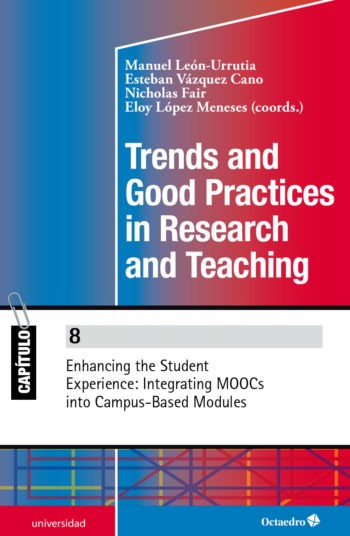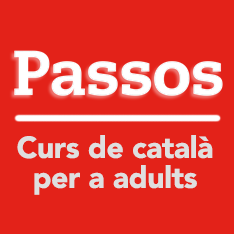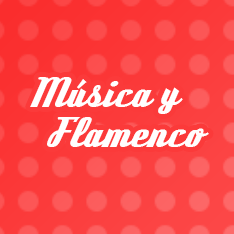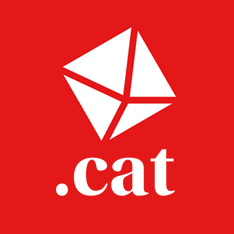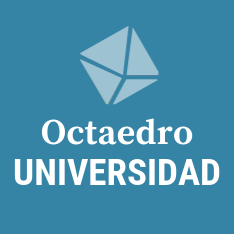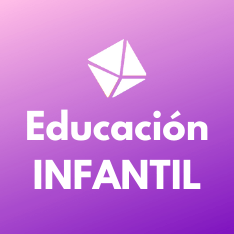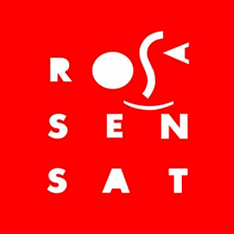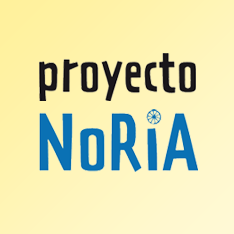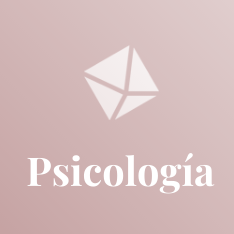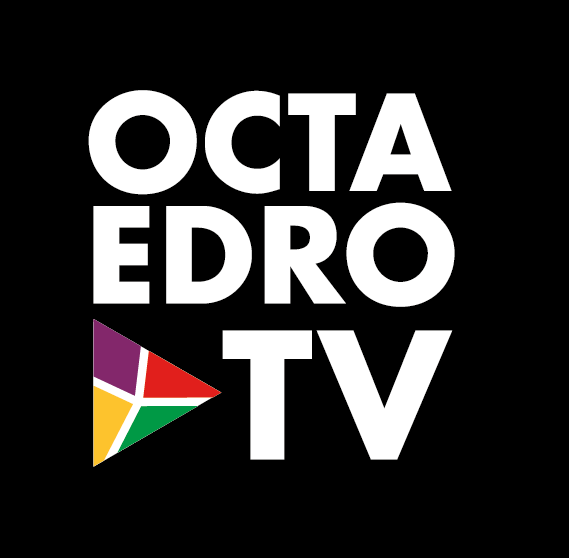Referencias bibliográficas
- Andone, D., Mihaescu, V., Ternauciuc, A., & Vasiu, R. (2015). Integrating MOOCs in Traditional Higher Education. In Proceedings of the Third European Summit of MOOCs Stakeholders (pp. 71-75).
- Berners-Lee, T., Fischetti, M., & Foreword By-Dertouzos, M. L., 2000. Weaving the Web: The original design and ultimate destiny of the World Wide Web by its inventor. Harper Information.
- Bijker, W. E., Hughes, T. P., & Pinch, T. J. (eds.) (1987). The social construction of technological systems: New directions in the sociology and history of technology.
- Bruff, D. O., Fisher, D. H., McEwen, K. E., & Smith, B. E. (2013). Wrapping a MOOC: Student Perceptions of an Experiment in Blended Learning, MERLOT, Journal of Online Learning and Teaching, 9 (2), 187-199.
- Callon, M. (1986). Some elements of a sociology of translation: domestication of the scallops and the fishermen of St. Brieuc Bay, Power, action, and belief: A new sociology of knowledge, 32, 196-223.
- Castells, M., 1996. The network society (vol. 469). Oxford: Blackwell.
- Caulfield, M., Collier, A., & Halawa, S. (2013). Rethinking online community in MOOCs used for blended learning, Educause Review Online, 1-9. Available at <http://er.educause.edu/articles/2013/10/rethinking-online-community-in-moocs-used-for-blended-learning>.
- Carr, W. & Kemmis, S. (2003). Becoming critical: education knowledge and action research. Routledge.
- Cummings, T. G. (1978). Self-regulating work groups: A socio-technical synthesis. Academy of Management Review, 3 (3), 625-634.
- Davis, H., Dickens, K., León-Urrutia, M., Sánchez Vera, M. del M., & White, S. (2014). MOOCs for Universities and Learners An analysis of motivating factors. In Proceedings of the 6th International Conference on Computer Supported Education. Barcelona. Available at <http://eprints.soton.ac.uk/363714/1/DavisEtAl2014MOOCsCSEDUFinal.pdf>.
- Davis, H. C., Halford, S. J., and Gibbins, N. (2012). Digital natives? Investigating young people’s critical skills in evaluating web based information. In Proceedings of the 4th Annual ACM Web Science Conference. ACM, pp. 78-81.
- Downes, S. (2006). Learning networks and connective knowledge, Collective Intelligence and Elearning, 20, 1-26.
- — (2007). What Connectivism is. Available at <http://halfanhour.blogspot.co.uk/2007/02/what-connectivism-is.html>.
- — (2008). Places to GO: Connectivism & connective knowledge. Innovate, 5 (1).
- Garrison, D. R. & Vaughan, N. D. (2008). Blended learning in higher education: Framework, principles, and guidelines. John Wiley & Sons.
- Geels, F. W. (2002). Technological transitions as evolutionary reconfiguration processes: a multi-level perspective and a case-study, Research Policy, 31 (8), 1257-1274.
- Goodyear, P. & Retalis, S. (2010). Technology-enhanced learning. (Sense publishers).
- Goodyear, P., Banks, S., Hodgson, V., & McConnell, D. (eds.) (2006). Advances in research on networked learning (vol. 4). Springer Science & Business Media.
- Griffiths, R. (2013). MOOCs in the classroom? In Haggard, S. (ed.), The maturing of the MOOC (p. 9). doi: http://doi.org/10.18665/sr.24658.
- Haggard, S., Brown, S., Mills, R., Tait, A., Warburton, S., Lawton, W., & Angulo, T. (2013). The maturing of the MOOC: Literature review of massive open online courses and other forms of online distance learning. Department for Business, Innovation and Skills, UK Government.
- Hao, Y. (2014). Exploring Undergraduate Students’ Perceptions of MOOCs. In World Conference on E-Learning in Corporate, Government, Healthcare, and Higher Education, vol. 2014, pp. 789-792. Available at <http://www.editlib.org/p/148807/>.
- Holotescu, C., Grosseck, G., Cretu, V., & Naaji, A. (2014). Integrating MOOCs in blended courses. In Let’S Build the Future Through Learning Innovation!, vol. 1, pp. 243-250. doi: http://doi.org/10.12753/2066-026X-14-034.
- Hotle, S. L., & Garrow, L. A. (2016). Effects of the traditional and flipped classrooms on undergraduate student opinions and success. Journal of Professional Issues in Engineering Education and Practice, 142 (1), 5015005. doi: http://doi.org/10.1061/(ASCE)EI.1943-5541.0000259.
- Hughes, T. P. (1987). The evolution of large technological systems. In The social construction of technological systems: New directions in the sociology and history of technology, pp. 51-82.
- Illich, I (1971). Deschooling Society (chapter 6): Learning Webs. Calder & Boyars.
- Israel, M. J. (2015). Effectiveness of integrating MOOCs in traditional classrooms for undergraduate students, International Review of Research in Open and Distance Learning, 16 (5), 102-118.
- Kang, S.-C. J., Li, Y., & Tseng, C. (2016). The effect of soft classroom: A new learning environment integrating MOOCs into conventional classrooms for college students. In ASEE Annual Conference and Exposition, Conference Proceedings, vol. 2016-June, p. 14.
- Koller, D. (2012). How online courses can form a basis for on-campus teaching. Forbes.
- Latour, B. (1987). Science in Action: How to Follow Scientists and Engineers Through Society. Milton Keynes: Open University Press.
- — (1990). Technology is society made durable, The Sociological Review, 38 (S1), 103-131.
- Lave, J. (1991). Situating learning in communities of practice, Perspectives on Socially Shared Cognition, 2, 63-82.
- Lave, J. & Wenger, E. (1991). Situated learning: Legitimate peripheral participation. Cambridge University Press.
- Law, J. (1992). Notes on the theory of the actor-network: Ordering, strategy, and heterogeneity. Systems practice, 5 (4), 379-393.
- Leon, M., White, S., & White, S. (2016). MOOCs in Higher Education magazines: a content analysis of internal stakeholder perspectives. Springer. doi: <http://dx.doi.org/10.1007/978-3-319-29585-5_23>.
- Lewin, K. (1946). Action research and minority problems, Journal of Social Issues, 2 (4), 34-46.
- Lightfoot, J. (2005). Integrating emerging technologies into traditional classrooms: a ped. International Journal of Instructional Media, 32 (2), 209–224.
- Linderbaum, B. A. & Levy, P. E. (2010). The development and validation of the Feedback Orientation Scale (FOS), Journal of Management, 36 (6), 1372-1405.
- Mazur, E. (2012). The Twilight of the Lecture’, Harvard Magazine.
- Rainie, L. & Wellman, B. (2012). Networked: The new social operating system. Mit Press.
- Richardson, W. & Mancabelli, R. (2011). Personal learning networks: Using the power of connections to transform education. Solution Tree Press.
- Rodriguez, C. O. (2012). MOOCs and the AI-Stanford like courses: Two successful and distinct course formats for massive open online courses, European Journal of Open Distance and ELearning, II, 1-13. Available at <http://www.eurodl.org/?article=516>.
- Sandeen, C. (2013). Integrating MOOCS into Traditional Higher Education: The Emerging “MOOC 3.0”, Era, Change: The Magazine of Higher Learning, 45 (6), 34-39. doi: <http://doi.org/10.1080/00091383.2013.842103>.
- Sharples, M., Adams, A., Ferguson, R., Gaved, M., McAndrew, P., Rienties, B., Weller, M., & Whitelock, D. (2014). Innovating Pedagogy 2014: Open University Innovation Report 3. Milton Keynes: The Open University.
- Siemens, G. (2004). Connectivism. A learning theory for the digital age. Available at <http://www. Elearnspace. org/Articles/connectivism. htm>.
- — (2005a). Connectivism: Learning as network-creation, ASTD Learning News, 10 (1).
- — (2005b). Connectivism: A learning theory for the digital age. Chicago
- — (2014). The attack on our higher education system, and why we should welcome it, TED blog.
- Vygotsky, L (1978). Mind in Society. London: Harvard University Press.
- White, D. S. & Le Cornu, A. (2011). Visitors and Residents: A new typology for online engagement, First Monday, 16 (9).
